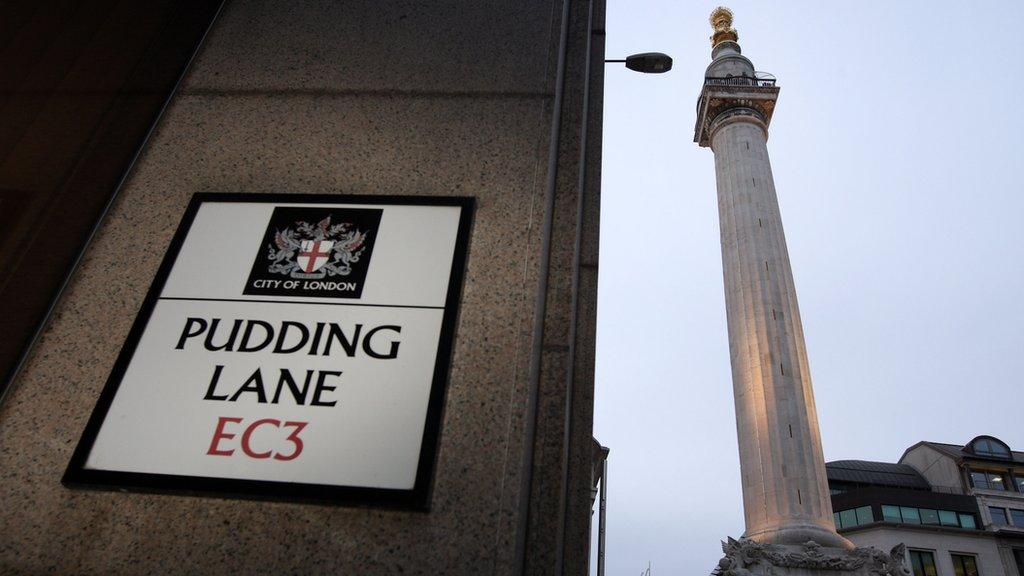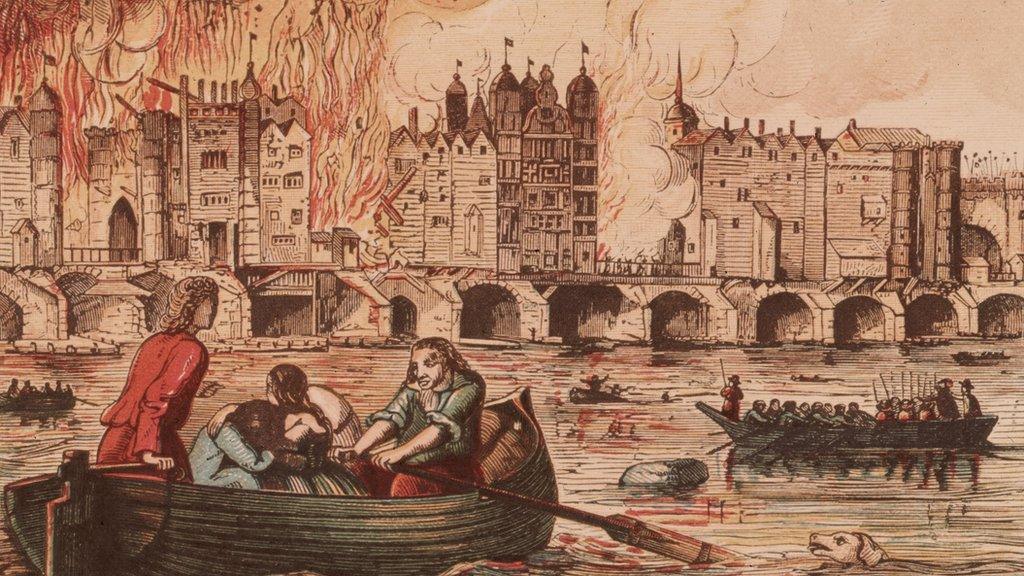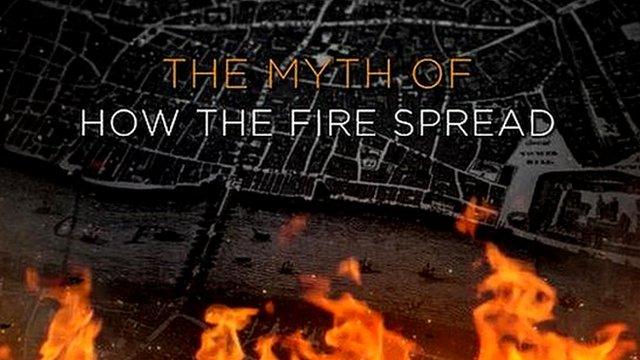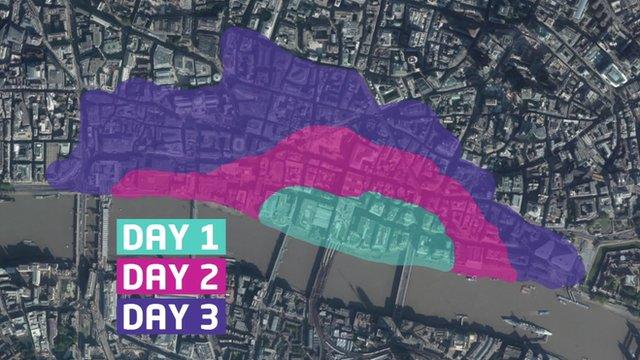Great Fire of London: What was it and how did it start?
- Published
What was the Great Fire of London?
2 September is the anniversary of the start of the Great Fire of London, which changed the skyline of the capital city forever.
In 1666, fires in London were quite common. Homes didn't have electricity, so real flames were used for lighting, cooking, and heating homes.
Also buildings were made using wooden timbers and were built close together, so if a fire started it was pretty easy for it to spread.
No fire had ever grown as big as the Great Fire of London before. Lots of buildings were destroyed and it had a really big impact on people living in the city.
How did the fire start?

Pudding lane in London now has a monument to remember the Great Fire
The summer of 1666 had been particularly dry, with drought making conditions more dangerous.
It's thought that the fire started in a baker's shop early in the morning.
The shop belonged to the king's baker, Thomas Farynor, in Pudding Lane.
With strong winds, the fire spread quickly down Pudding Lane, towards the River Thames and London Bridge.
As the fire reached the River Thames, it passed over warehouses full of flammable materials like oil, which quickly set on fire. After just a few hours, London Bridge was on fire too.
The fire was stopped from reaching the south side of the river because a section of the bridge was missing.
The Great Fire - how it happened
How many buildings did the fire destroy?
Famous buildings including St Paul's Cathedral, The Royal Exchange, and the Guildhall were completely destroyed, as well as 13,200 houses, and 87 parish churches.
How did they stop the fire?

This picture shows people escaping the flames.
Firefighting was much more basic in 1666, and people didn't have the technology firefighters use today.
Fire brigades used leather buckets, axes and water to try and stop the fire but they didn't work very well.
Instead, a plan was suggested to blow up houses in the path of the fire, so that there would be an area with no houses to act as fuel for the fire to keep growing.
The Navy used gunpowder to destroy the buildings and by the next morning, the fire had been stopped.
Horrible Histories
How many people were affected?
Up to a third of the city was destroyed and more than 70 thousand people were made homeless.
Six people were recorded to have lost their lives as a result of the fire but it's thought many more could have died.
- Published2 September 2016

- Published2 September 2016

